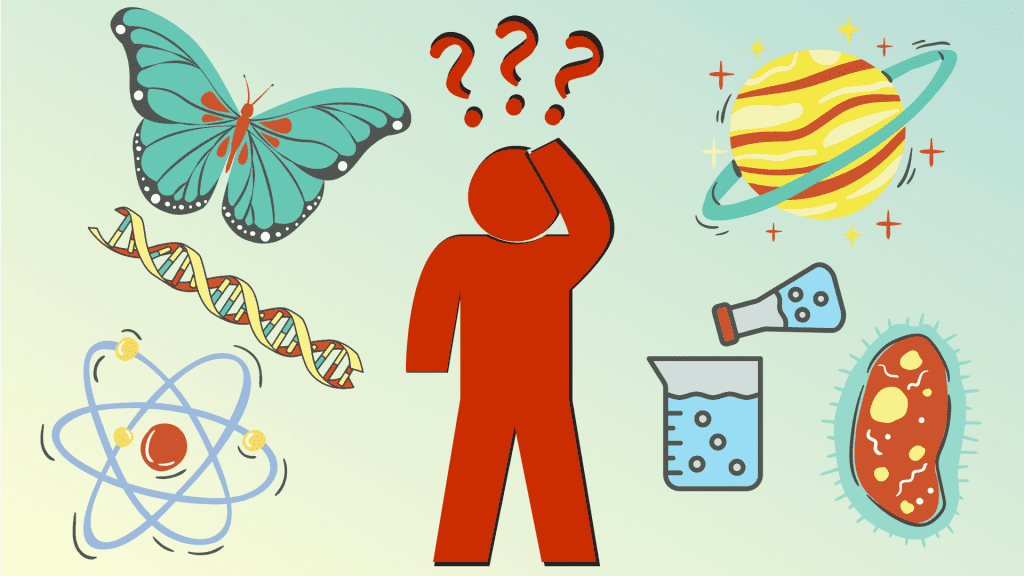There are many misconceptions about the process of science is and how it works, so let’s dive in and address some of the more common ones head-on.
There is no single “scientific method”: The recipe-like “scientific method” presented in countless textbooks is at best an oversimplification, and at worst, wrong. There are endless ways to collect and evaluate evidence.
Science isn’t just a collection of facts: While science textbooks are often filled with facts, science is a process of learning about the natural world. It isn’t just what we know, it’s how we know. (Also, “facts” aren’t set in stone. Just ask Pluto.)
Scientific conclusions are always tentative: Scientific knowledge is subject to revision, and we NEVER reach 100% certainty or proof! The better the evidence the more reliable the conclusion…. but we always leave ourselves open to changing our minds with new evidence.
However, not all conclusions are equally tentative: Conclusions with limited or low-quality evidence are very tentative while those with lots of supporting evidence from many different types of studies are more durable. For example, scientific theories have survived repeated testing, and thus are about as close to “truth” as we may ever get.
In other words, science deals with probabilities. The goal isn’t “proof” or “absolute certainty”, but “high probability” explanations that work, consistently and reliably.
Science is a collaborative process: From collecting and evaluating evidence to arguing over the conclusions that can be drawn from the evidence, scientists work together. Scientists often collaborate, share ideas at conferences, publish in peer-reviewed journals, etc., all of which provide opportunities to learn from each other and provide checks-and-balances on each other’s work.
Scientists argue over the evidence and the conclusions that can be drawn from the evidence. While this argumentation can at times be heated (for example,, if you’re wrong — or worse, lying — someone will find it and point it out), the goal is to get closer to the truth than individual scientists could on their own.
Diverse communities are better able to find the “truth”: Communities with diverse perspectives, backgrounds, worldviews, etc. are better able to point out each other’s biases and blindspots, and are thus more likely to get closer to understanding reality.
However, science is not democratic: The process of science is an attempt to understand reality as it is, not how we want it to be. Achieving consensus in science is time-consuming and requires significant evidence and argumentation, and is never the result of feelings or popularity. The best explanation is the one that works the best, and has survived repeated attempts at disproof, not the one that’s most popular.
The take-home message: Science is a community of experts using diverse methods to gather evidence and scrutinize claims. It’s a way of learning about the natural world, of trying to get closer to the truth by testing our expectations against reality.
And it works. (Think of all the science involved in communicating around the world instantaneously on your phone!)
Learn more
Correcting misconceptions (Understanding Science, UC Berkeley)
